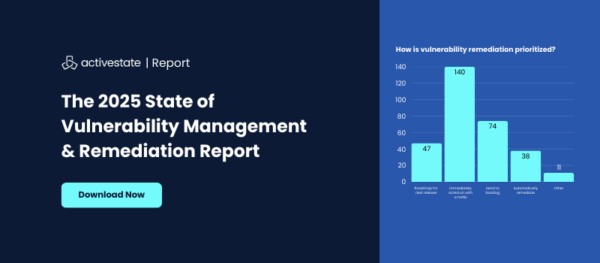Cybersecurity challenges are becoming more complex than ever.
With the rapid adoption of open source and GenAI, and the increasing pressure to innovate faster with fewer resources, DevSecOps teams are faced with a perfect storm. Cyber attacks are not just becoming more frequent, they’re also more sophisticated, putting sensitive data and company reputations at risk.
Enter Application Security Posture Management (ASPM): a proactive, end-to-end solution designed to tackle these challenges head on.
In this article, we’ll explore the key components, benefits, and considerations for implementing ASPM to safeguard your digital infrastructure.
What is Application Security Posture Management (ASPM)?
Application Security Posture Management is an end-to-end process that helps identify and reduce cyber security risk factors. Spanning the entire software development lifecycle (SDLC), ASPM helps security, DevOps, and development teams visualize, detect, triage, and remediate security issues in their software applications.
ASPM helps modern software teams democratize application security and vulnerability management, and makes it easier to handle large volumes of complex code at scale.
Key components of Application Security Posture Management (ASPM)
ASPM helps teams in three critical areas:
- Detect: Identify and catalogue all applications. Evaluate applications for vulnerabilities and threats.
- Prioritize: Prioritize findings based on the potential impact and imminent risk.
- Remediate: Detect and patch vulnerabilities, and implement important security controls. Ensure systematic adherence to governance and policy. Monitor and enforce security policies.
There are a variety of ASPM platforms on the market that help teams implement these key components. However, most of them fall short in the remediation phase.
At ActiveState, we prioritize creating features that help you upgrade, build, and deploy fixes, since you’re not secure until these steps have been taken.
Why ASPM matters for software teams
Software development is changing rapidly, creating real challenges for software supply chain security. The responsibility for security is moving upstream in the SDLC, putting more obligation on developers to build securely from the start.
At the same time, engineering teams are being pressured to innovate at record speed, resulting in more lines of code than ever before. To top it off, open source and GenAI are now becoming go-to resources for code. While these two resources have been game-changing for teams and help combat rising pressures to “do more with less”, it means developers and security teams are now even more responsible for the security of code they didn’t write.
What could possibly go wrong?
Well, as seen with the recent rise in high-profile cyber security attacks… a lot.
ASPM brings much-needed visibility and a programmatic-approach to application security and achieving software supply chain security.
Lock down your application security with ASPM
Inertia is a tricky thing. When you’ve been doing things one way for so long, changing it even for the promise of something better is a tough sell.
However, introducing an ASPM platform is well worth it. Here’s why:
Enhance your security
Cyber security protocols are kind of like car insurance. No one’s very passionate about it. You might even groan at putting your budget towards it until the day comes when you need it.
If you haven’t experienced an attempted breach yet, it’s only a matter of time. Investing in ASPM offers huge security benefits, allowing you to:
- Proactively perform a risk assessment across your applications.
- Reduce your vulnerability exposure.
- Swiftly manage and mitigate breaches or security issues if they do happen.
Improve compliance
Security isn’t just a nice to have, it’s the law.
Increased regulatory and security measures are putting even more pressure on security and development teams with initiatives like SOC2, FedRamp/FIPS, ISO 27001, SSDF, and SLSA.
ASPM can help streamline your compliance efforts, reducing the risk of incurring penalties or getting yourself in hot water over legal issues.
Save on costs
ASPM can help reduce costs in more ways than one.
First, data breaches are extremely expensive. According to IBM’s 2024 Data Breach report, the global average cost of a data breach in 2024 was USD 4.88 million. Implementing an ASPM program to mitigate data and cybersecurity breaches is a bargain compared to that price tag.
Second, ASPM platforms can help your security, DevOps, and development teams work together more efficiently, reducing expensive and unproductive labor hours. ASPM platforms can also help eliminate the need for multiple security tools, allowing you to cut down on your tool sprawl and budget.
Enhance your business reputation
Your customers will take you seriously when you take your cybersecurity seriously. Considering 46% of breaches involve customer data, customers have a right to be concerned and ask questions. Showcasing your commitment to security can help build trust with your customers and partners.
Preventing attacks before they happen can save your customer relationships. In 2024, the average loss of business cost from a breach was USD 1.47 million. And those customers likely walked right on over to the competition that did invest in security.
How to choose the right ASPM solution for your business
It’s important to fully evaluate ASPM platforms, so you’re not just adding another inefficient tool to your already expansive tech stack. Because not all platforms are created equal, here’s what to look for:
- Scalability and flexibility: The platform should grow with your needs and adapt to evolving challenges.
- Integration capabilities: Seamless compatibility with your existing tools can save time and implementation costs, and reduce complexity.
- User-friendly interface: Empower your team to efficiently navigate the tool and use the full breadth of its capabilities.
- Comprehensive feature set: The platform should offer both robust security features that provide support for all three components of ASPM: detect, prioritize, and remediate, and reliable performance, giving you the confidence to focus on innovation rather than troubleshooting.
Conclusion
Application Security Posture Management (ASPM) is no longer just a “nice to have” – it’s a must-have for modern software teams. By enhancing security, improving compliance, reducing costs, and safeguarding your reputation, ASPM provides a proactive and holistic approach to managing application vulnerabilities and threats.
As cyber risks grow alongside the breakneck pace of innovation, ASPM can help you stay ahead, ensuring your systems remain resilient and trustworthy.
Start exploring ASPM platforms today to protect your digital infrastructure and what matters most.








